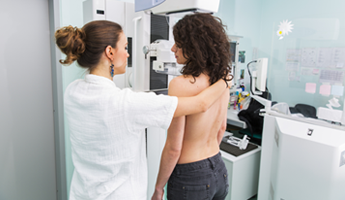Breast cancer is the most common cancer in the UK and the incidence is on the rise. The lifetime risk of getting breast cancer is 1 in 8.
NHSBSP: Women above 50 and 70 years are offered 3-yearly mammogram as part of NHS Breast Screening Programme (NHSBSP). Currently some women younger than 50 years are also being offered screening mammogram, as part of a pilot study that’s is being conducted in England.
High-Risk screening: The breast screening is also offered to women who are high risk for developing breast cancer due to:
These women are offered yearly mammogram (and MRI in selected group).
Are all breast cancers same?
All diagnoses of breast cancers are not equivalent. Breast cancer is loosely used for both DCIS (Pre-invasive cancer) and invasive cancer.
DCIS: women diagnosed with DCIS have an excellent prognosis after treatment. DCIS is usually detected by the calcium dots on the mammogram as it only rarely form a lump. By definition, DCIS is an abnormality of the cells within the breast ducts and does not have the ability to spread. This is classified as low, intermediate and high grade DCIS. About half of high grade DCIS would turn in to invasive cancer if left untreated, so treatment is offered with a curative intent given the early diagnosis. Its not very clear if all low grade DCIS should be treated as this might not develop into anything significant in a women’s lifetime. So a trial is about to be offered to women with low risk DCIS offering standard treatment versus observation with regular monitoring. Right now, the standard treatment for all grades of DCIS is surgery with or without radiotherapy. Tamoxifen is not offered as a routine practice in UK to women with diagnosis of DCIS.
Invasive breast cancer: This is the terminology for ‘proper’ breast cancer, which has/can develop the ability to spread. All women with this diagnosis would be offered treatment that could include surgery, chemotherapy, radiotherapy, hormone therapy (such as tamoxifen), biological therapy (such as Herceptin) in various permutations and combinations. The aggression of the cancer varies considerably and the treating doctors would be able to explain that in detail to you along the course of treatment. There are various factors that determine the tumour aggression, including, grade of the tumour, lymph node spread, whether the cancer expresses oestrogen receptor and/or Herceptin sensitivity. This, in turn, determines the recommendations for therapies such as chemotherapy, Herceptin, radiotherapy after mastectomy. Most often, surgery is the first treatment that is offered, however, it is quite common, that the option of chemotherapy first is discussed, particularly in young women.
Outcomes:
The improvement in treatment combined with early diagnosis of breast cancer has resulted in improved survival rates in UK. More than 90% of women diagnosed with breast cancer at the earliest stage survive their disease for at least five years. This figure is around 15% for those women who are diagnosed with the most advanced stage disease.
According to CRUK statistics, almost 8 in 10 women diagnosed with breast cancer now survive their disease for at least ten years.

Do you have breast symptoms or wish to discuss treatment for breast cancer or consider reconstruction?
Consultation Process ›
Not happy with the size or shape of your breasts?
Find out more ›